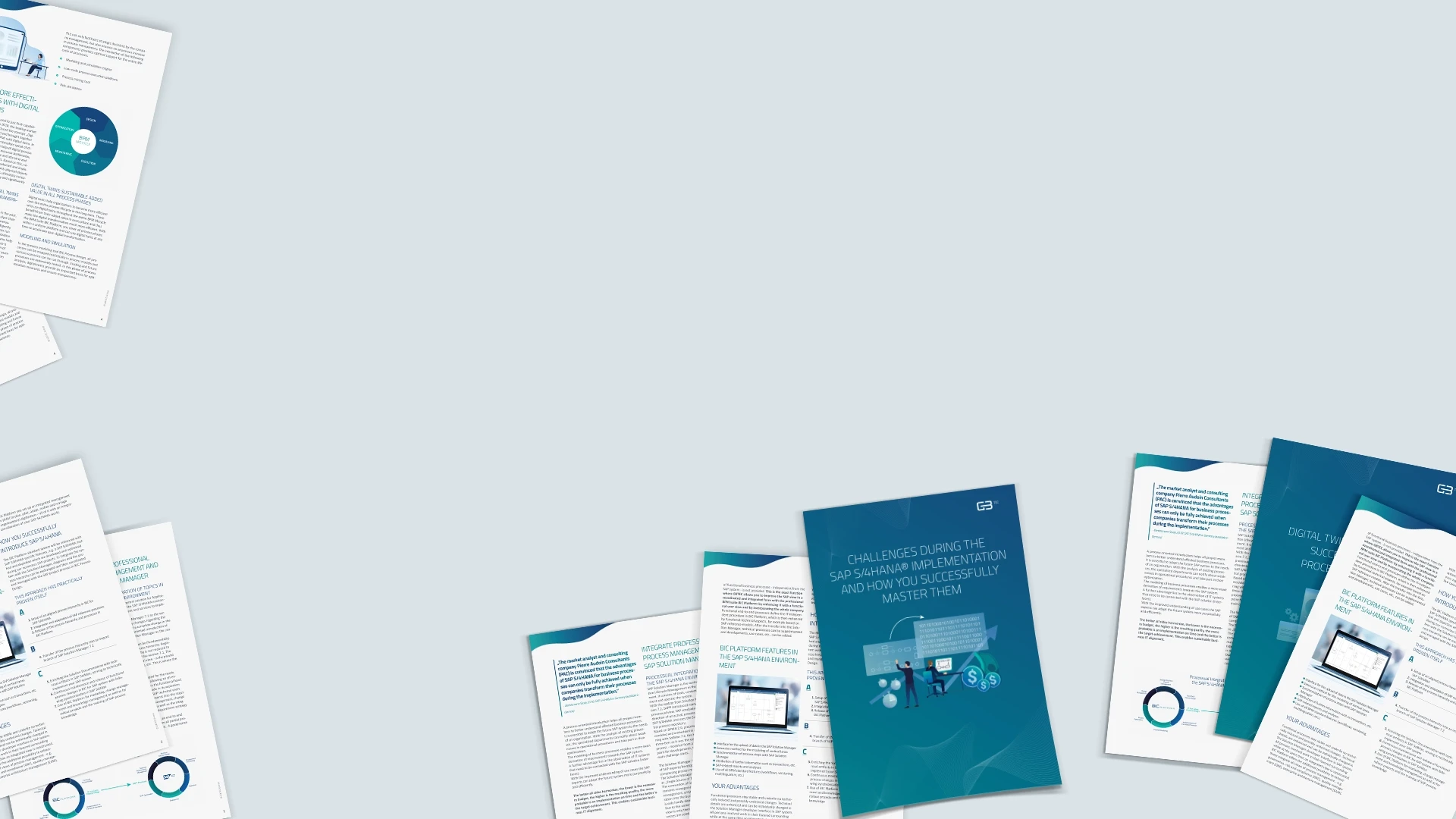BPM Trends 2023 - The future of BPM
2022 was an exciting year for businesses: The ongoing impact of the Corona pandemic, the war in Ukraine, and the energy crisis - the list of challenges is long. Those that were able to quickly adapt to such changing market and customer demands are usually one step ahead of the competition in the new normal. Intelligent business process management (BPM) and thus efficient process flows are the key to success - and more necessary than ever in today's world.

Excerpt
The use of BPM has changed significantly in recent years. The tools that support BPM processes are becoming increasingly automated, intelligent and user-friendly. But how will BPM evolve? In our whitepaper, we present five trends that will continue to strongly influence BPM in 2023:
- No-Code/Low-Code-Technologies
The development and use of no-code and low-code tools has already increased more and more in recent years. But despite the digitalization boost, much remains to be done: Many companies still rely too much on manual processes and complex BPM systems, which often neglect the needs of end users. The shift towards more agile business processes will continue in the coming year - but for it to be successful, companies must continue to work consistently to eliminate inefficient processes and procedures and simplify operational activities, even for smaller user groups. No-code and low-code platforms help companies to…
- Adaptive Process Management
Classic BPM offers little flexibility in the design of business processes. This is mainly due to the separation in terms of personnel as well as time between process design and process execution, which significantly reduces the change flexibility of processes. The normative BPM approach requires frequent process execution under the same framework conditions in order to design a complete process model with all possible process variants. Similarly, process optimization requires a high frequency of execution in order to generate starting points for future performance improvements from the collected process data. This is only possible for highly regulated routine processes (such as quotation processes or vacation requests), but not for knowledge-intensive processes (such as consulting or sales discussions, accident recordings, expert opinions), which are characterized by a high degree of variability and complexity. Adaptive process management addresses this problem and takes into account…
- Automated Process Discovery
Automated Process Discovery, or Automated Business Process Discovery (ABPD), uses machine learning and artificial intelligence to automate the entire process discovery cycle as well as improve process efficiency. Unsupervised machine learning categorizes and structures unlabeled data and identifies meaningful patterns to assign automation potential to individual activities. Companies thus recognize which steps they can take to automate existing as well as new processes. It is also intended to identify process errors in value chains. With the help of ABPD, companies gain a comprehensive understanding of their existing business processes, uncover previously unconscious process steps and identify…
- The Process CEO
Another trend that can be increasingly observed in the BPM environment is the anchoring of process management at the top level of a company‘s organizational structure, with the so-called process CEO. In the past, the main task of process experts was to maintain and optimize existing processes in order to make them more efficient as well as less expensive. Today, optimizations and changes are essential for companies to continue to hold their own in the market. It therefore makes sense to…
- Green BPM
The topic of sustainability has been increasingly in the spotlight for some years now. Species extinction, high CO2 emissions and pollution of the oceans in combination with climate change are making more and more consumers sit up and take notice as well as placing new demands on companies - namely, to become more sustainable and assume more responsibility for the environment and society. And it is becoming increasingly apparent that sustainability and profitability work well together, rather than being mutually exclusive. Greater sustainability can, for example, help increase companies‘ innovative strength and open up new markets. For this reason, companies are increasingly investing in…
In addition to detailed explanations of these BPM trends, we will also show you the respective benefits and illustrate how companies can profit from them. Read on and prepare yourself and your BPM optimally for 2023!